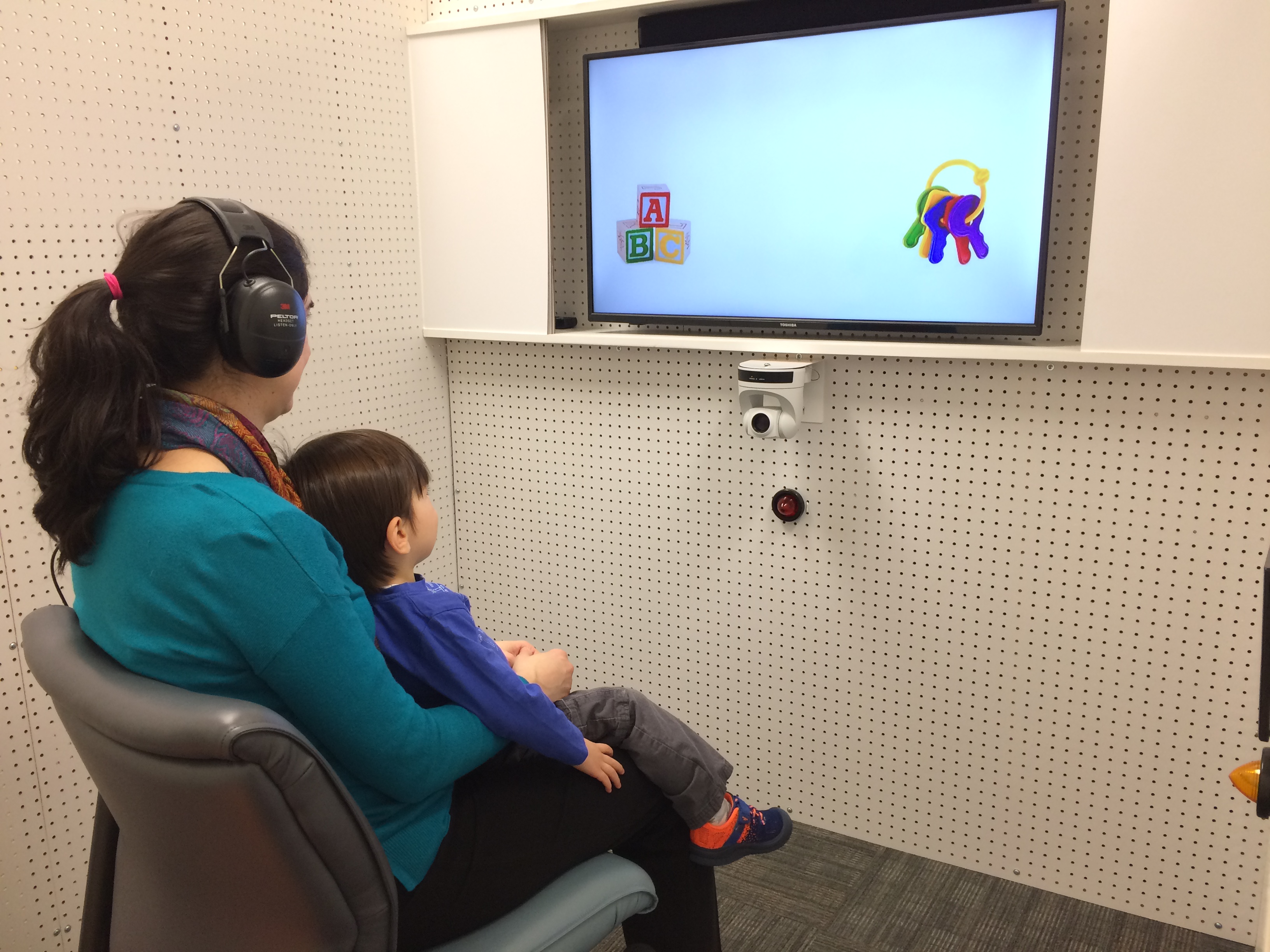Research
Our work explores a number of questions related to how children learn language:
- What factors make learning words easier?
- What type of information facilitates word recognition?
- How do children process different dialects and accents of their language?
- Do bilingual children acquire language skills differently?

BACKGROUND NOISE & BILINGUALISM
Noise is an environmental stressor that affects cognitive performance. There is considerable work suggesting that both short- and long-term exposure to noise leads to negative effects on cognitive skills, including short-term memory and sustained attention. Less is known about the role that noise plays on language development across different populations. Ethnic, racial and socioeconomic (SES) disparities in exposure to noise pollution in the U.S. have been well documented, and adverse health effects of noise pollution widely studied. However, there are many gaps in the literature when it comes to the effect of noise pollution on the acquisition of lexical skills. Millions of children in the U.S. are growing up in a household where a language-other-than English is spoken (Spanish being the largest group). To date our work has shown that bilinguals have more difficulty that monolinguals understanding speech in the presence of background noise, and this is true for both bilingual children – who are starting to learn their languages, as well as bilingual adults – who are “expert” language users. Our current work is exploring why this might be.

MUSIC & SONGS
One of our current lines of work examines whether music and song can help boost vocabulary learning in young children. In recent years, music interventions and learning-through song programs, including those that target vocabulary learning have increasingly gained popularity. Yet there is little empirical evidence to support this type of approach. Our work indicates that while songs help increase children’s attention during word learning, greater attention does not necessarily lead to greater learning. In fact, young children show improved word-learning performance for items that were trained in a spoken sentence (produced in child-directed speech – CDS) compared to items that were trained in a song. This initial study suggests that while songs may be beneficial for increasing child engagement, spoken sentences may be best for supporting deep-level learning of lexical concepts.

EXERCISE AND LANGUAGE LEARNING
Another every-day activity that children of different ages regularly engage in is exercise. There has been considerable work suggesting that exercise can improve general cognitive processes. Specifically, physical activity is linked to improvements in executive function skills, as well as enhanced performance during memory tasks that require individuals to encode and consolidate new information. In a recent study, we examined whether different types of exercise (i.e., aerobic vs. anaerobic) may lead to improved performance during vocabulary learning in school-aged children. We found that the previously-identified benefits of exercise on language abilities in adults also extended to this group. However, not all types of physical activity lead to this boost in performance, as only aerobic (but not anaerobic) exercise improved children’s ability to acquire new word-object relations.

CODE-SWITCHING/LANGUAGE MIXING
Parents’ speech to children contains a combination of single- and multi-word utterances, and in the case of bilingual households, also utterances that often contain more than one language (i.e., utterances in which language-mixing or code-switching occurs). While bilingual children and second-language learners are frequently exposed to sentences that include code-switching, many questions remain regarding the role that this type of input plays on the acquisition of two languages simultaneously (as in the case of bilinguals) as well as the acquisition of a second language later in life. Our studies examine questions related to this topic.

METHODS
Since infants cannot yet tell us what they know/don’t know, we rely on a variety of behavioral measures where children watch movies or listen to sounds while we record their eye movements.
